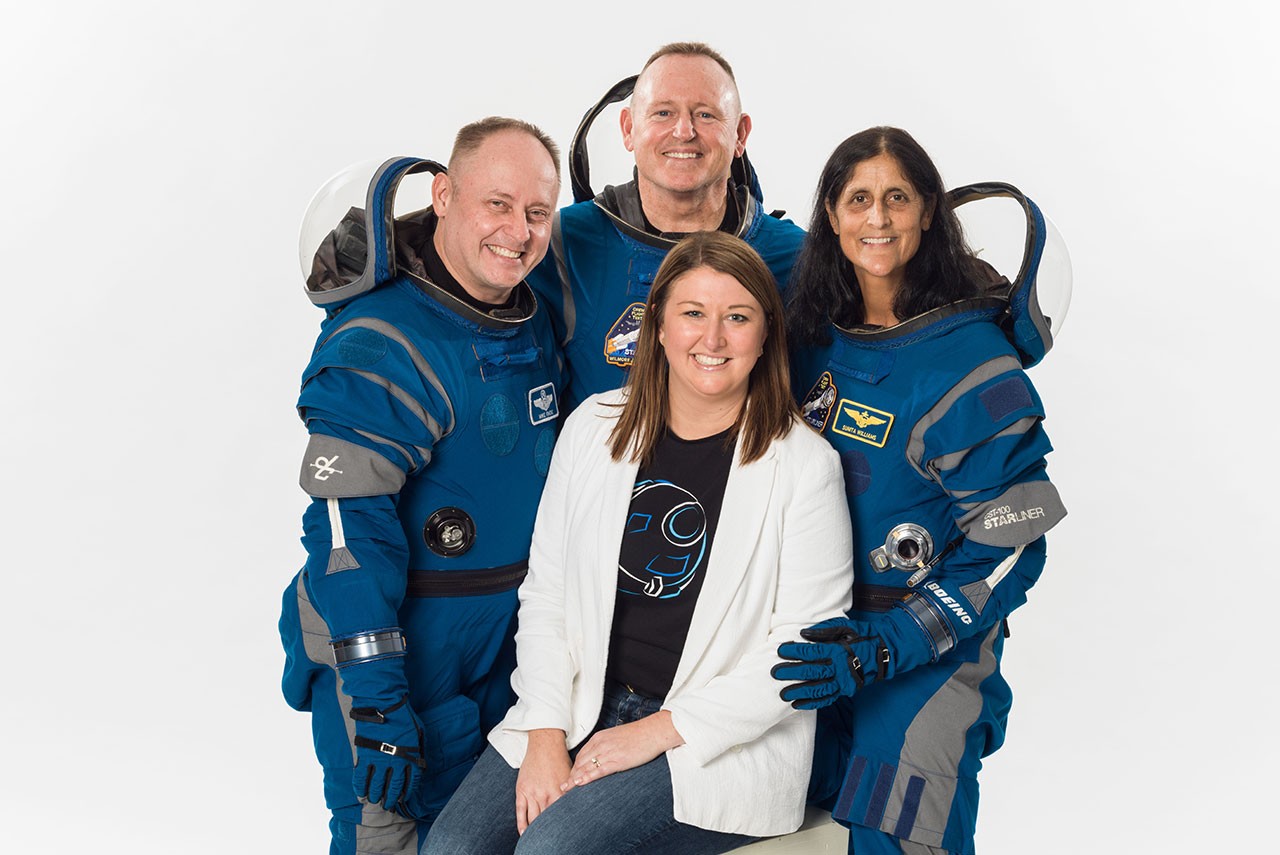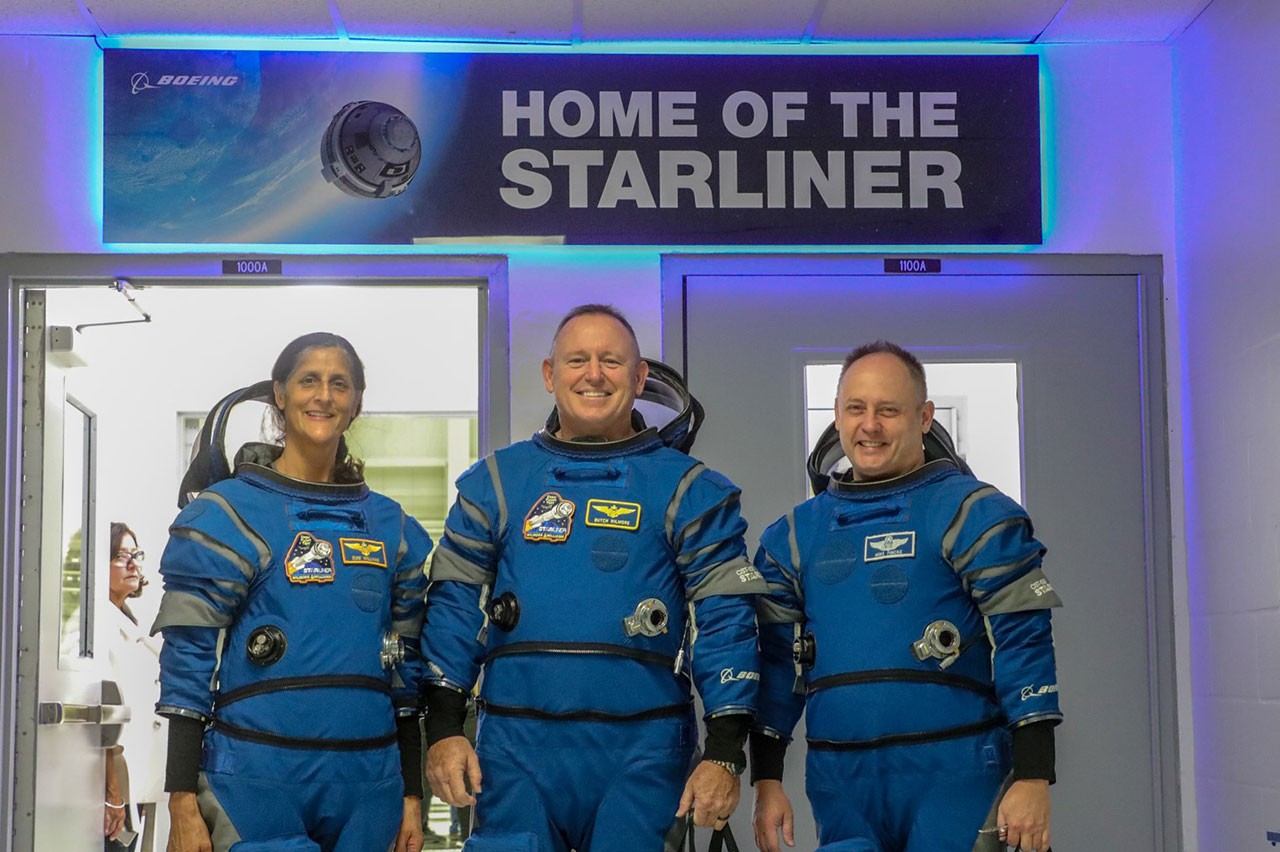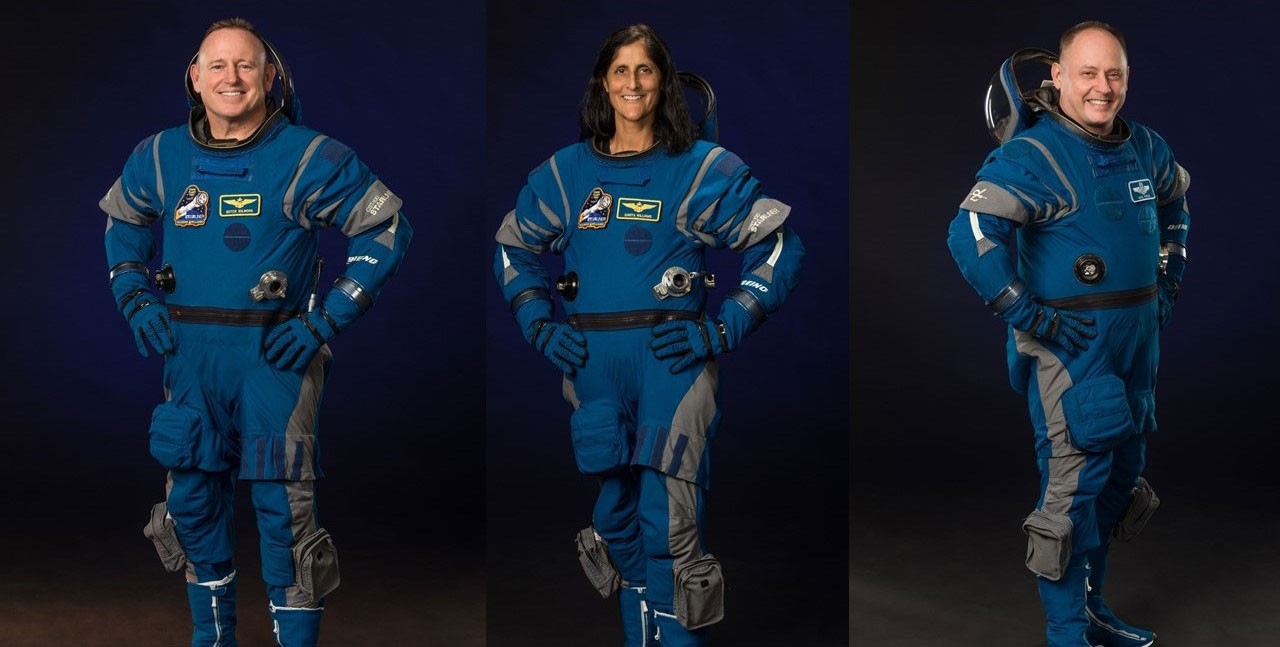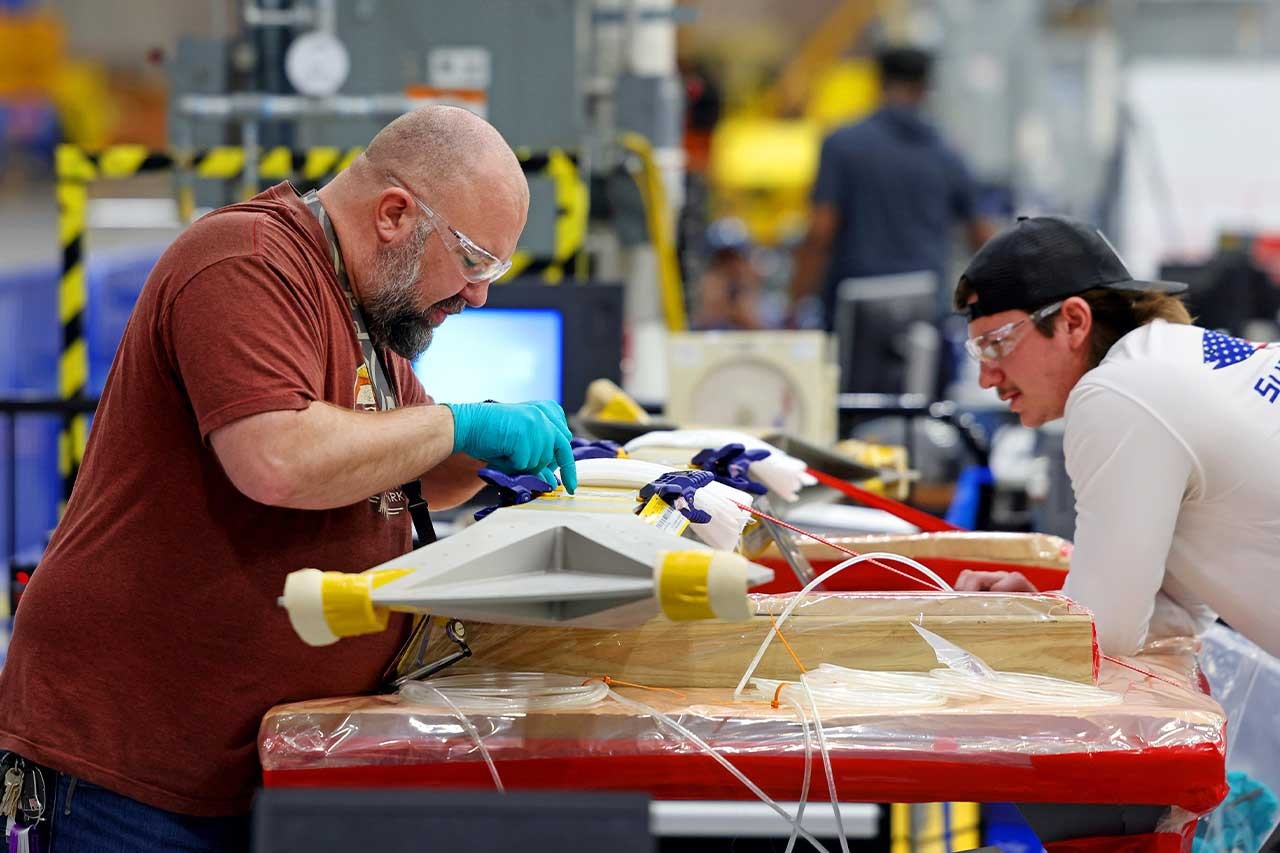Packing Starliner cargo is a balancing act
Flight hardware, student artwork, astronauts’ keepsakes to fly on spacecraft’s first crewed flight.
Ensuring cargo is packed in the proper configuration on a spacecraft and the proper weight with crew on board is a strategic process.
The CST-100 Starliner’s Crew Flight Test (CFT) to the International Space Station will carry 759 pounds (344 kilograms) of cargo, including 452 pounds (205 kilograms) from Boeing and 307 pounds (139 kilograms) from NASA.
Boeing will have 25 bags and NASA will have 11 bags stored in the cabin where NASA astronauts Barry “Butch” Wilmore and Sunita “Suni” Williams will be seated. NASA astronaut Mike Fincke is backup spacecraft test pilot if either Wilmore or Williams is not able to fly. He also is pilot of the post-certification mission, Starliner-1, which will follow CFT.
Examples of Boeing cargo include vehicle supplies and tools, personal hygiene items for the astronauts and emergency life support equipment. NASA cargo includes food, clothing, exercise gear, medical supplies, photo/media equipment and crew personal preference items.
Also on board will be creative space-themed masterpieces created by students from around the world through a partnership between Boeing and the Space Foundation. A thumb drive packed on board contains more than 3,400 different submissions from 66 countries, including 35 U.S. states.
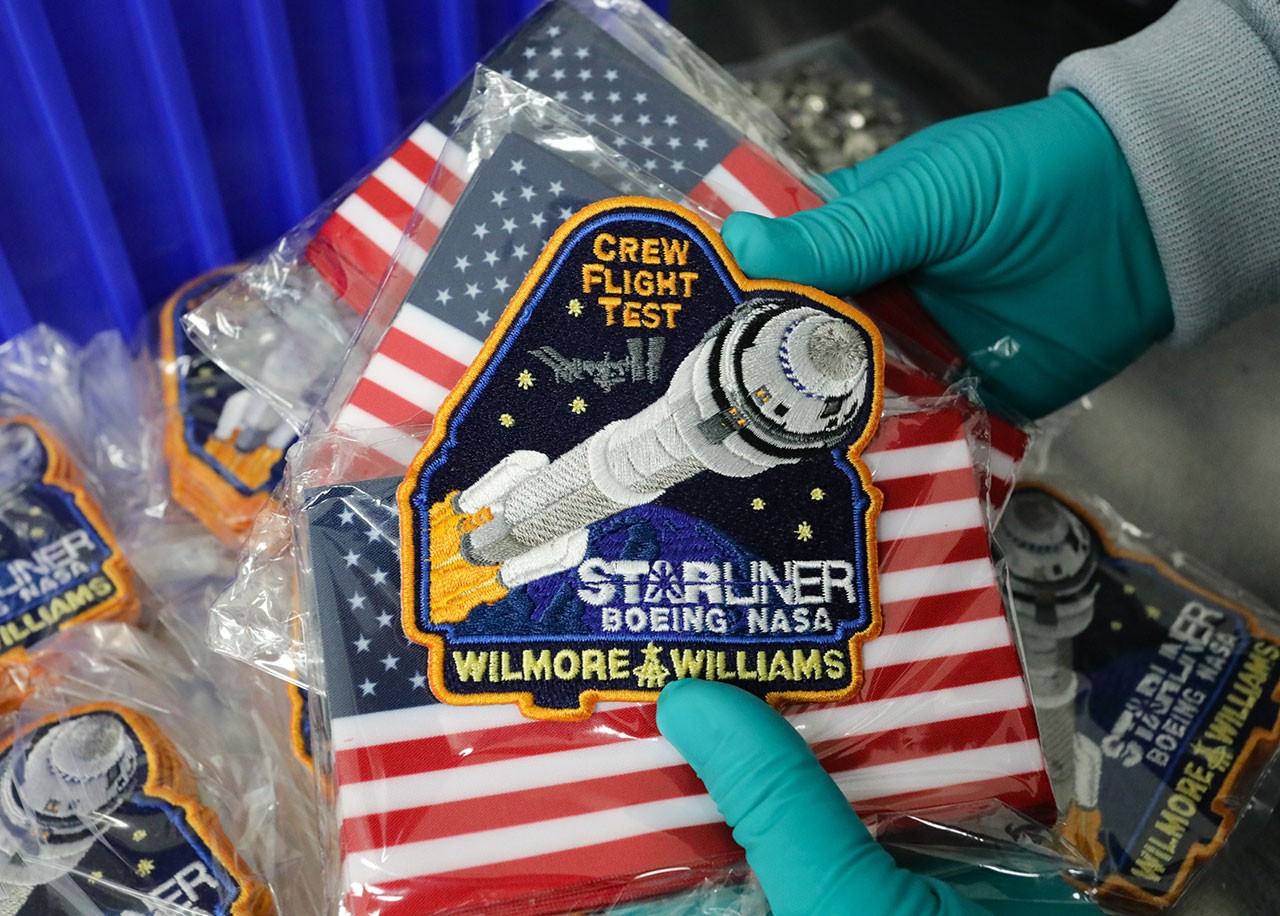 Crew Flight Test mission patches, small American flags and commemorative mission coins are part of the cargo for the Crew Flight Test. (John Proferes photo)
Crew Flight Test mission patches, small American flags and commemorative mission coins are part of the cargo for the Crew Flight Test. (John Proferes photo)
Historically, as part of most flights to the space station, cargo will include mementos such as CFT mission patches and CFT commemorative mission coins and small American flags, as well as NASA Silver Snoopy pins, which are awarded by astronauts to individuals for outstanding achievements related to human flight safety or mission success.
Astronauts’ special cargo
Items from Wilmore and Williams will also be on board. Wilmore will be flying special gold rings, including two he gave his brother and father. He had the rings made to resemble the U.S. Navy astronaut pilot wing pin. He did something similar for other family members during previous space shuttle flights.
Wilmore is also flying some items from Tennessee Technological University and the University of Tennessee, of which he is an alumnus.
Williams is flying some Calypso-inspired items that will be revealed on orbit. Williams named the CFT spacecraft Calypso after the first Orbital Flight Test, based on her love of the ocean and Starliner being the gateway to science exploration in space — like Jacques Cousteau’s research ship Calypso was on Earth. She is taking up T-shirts from the U.S. Naval Academy as well items from the Sunita L. Williams Elementary School in Massachusetts, which opened in 2019. She’ll also have a diver pin and naval astronaut pilot wing pin.
“I’m bringing things that got me to where I am today,” she said.
She’ll have dog tags her mom had made of her two Labrador retrievers, Gunner and Rotor. In addition to special items for her family, she packed many multicolor socks she’ll be wearing in space, inspired by retired astronaut Shannon Lucid, who gave her a pair of socks after Williams’ first mission in space where she often was barefoot.
“She’s a wonderful, amazing lady and role model,” Williams said of Lucid. “I love having socks that feel good on your feet and that are bright and make you happy. One little way to make a statement about yourself. They’re just fun.”
Fincke has set aside some items as well if he flies as backup, including a Gamosa, a piece of cloth similar to a scarf, that displays red and white colors from his wife’s hometown in India called Assam.
“I bring one of those with me on every flight because I know it’s like a token of my wife’s love,” Fincke said.
He also has shirts from colleges he went to including the Massachusetts Institute of Technology and Stanford University. A Pittsburgh Steelers fan, he also has what they call a “terrible towel” ready to fly.
On the return home, Starliner is expected to bring back about 750 pounds (340 kilograms) of cargo, minus items consumed by the crew during the flight, like drinking water. About 355 pounds (161 kilograms) of the return mass will be NASA cargo. Items include crew food, clothing and medical supplies for the return phase of the mission, photo/media equipment, crew personal preference items and an empty NORS tank (Nitrogen/Oxygen Recharge System), to be serviced and refilled for future space station needs.
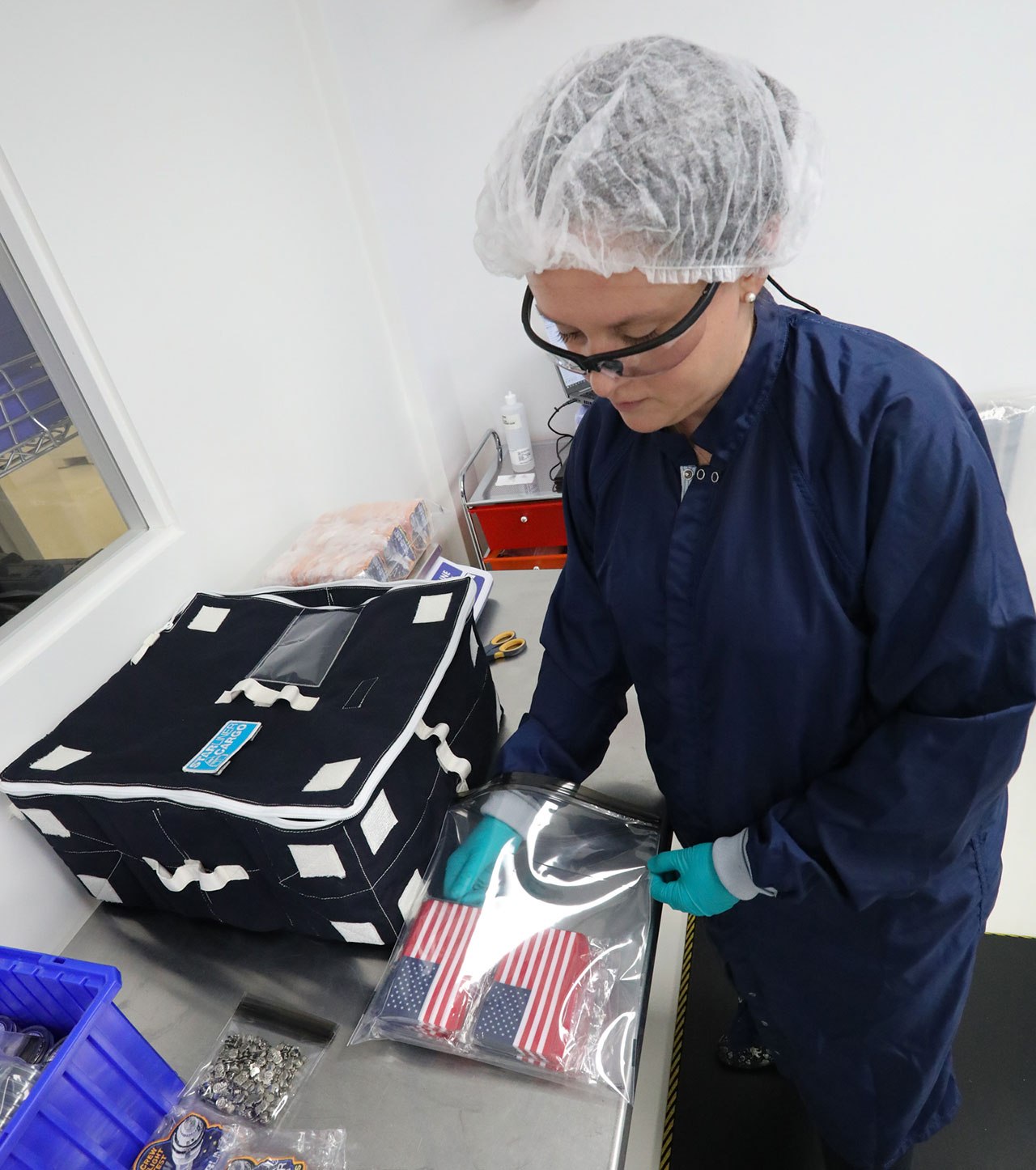 Dee Dobson, Crew and Cargo Accommodations Sub-System Starliner engineer, packs cargo for the Crew Flight Test. (John Proferes photo)
Dee Dobson, Crew and Cargo Accommodations Sub-System Starliner engineer, packs cargo for the Crew Flight Test. (John Proferes photo)
Balancing the cargo
Dee Dobson, Starliner, Crew and Cargo Accommodations Sub-System engineer, has been working with cargo for the past five years for Starliner’s previous orbital flight tests. She works with Minh Ly, Crew and Cargo Accommodations Sub-System lead.
The upcoming test flight will be the first with crew, which requires additional analysis when it comes to cargo packing. For Dobson and Ly it’s a balancing act, as each cargo bag is strategically placed for easy access and convenience to the crew and to ensure the safe weight of the spacecraft during the test flight.
“To have a smooth launch and atmospheric reentry, the vehicle has to be balanced,” Dobson said. “Having that balance is an important aspect of safety.”
The vehicle is weighed prior to flight, including as a full complete vehicle after fueling, as well as the crew module and service module separately before they are mated. There are weight requirements every step of the way, from when the spacecraft is stacked on United Launch Alliance’s Atlas V rocket, to how much it can weigh when it docks to the space station, to how much it can weigh as items are jettisoned prior to landing.
If a balancing change is needed prior to rollout from the factory, the cargo, which is packed in various locations throughout the cabin of the spacecraft, can be redistributed.
“You can’t move structured parts of the vehicle, like tanks or batteries, so the easiest solution is to readjust cargo,” Dobson said.
Supporting the crew
Dobson, who started as an intern on Starliner six years ago, also helps support the crew during the Crew Equipment Interface Test, where testing takes place with crew inside the spacecraft. At times, Dobson may also go inside the spacecraft or review items with crew that are in the cargo bags that they may need during flight to the space station.
“Ideally, they will never use four of the (emergency) bags I packed for them, but the items are there just in case there is an emergency,” Dobson said.
She also oversees the Mustang camera system that provides views inside the cabin. Working in human spaceflight and with the astronauts is a dream for Dobson, considering that as a child she wanted to be an astronaut. She also enjoyed learning about space while watching the Discovery Channel with her grandmother, who was a schoolteacher and principal.
“For people who spend their professional life in space, astronauts are down-to-earth, humble and kind,” Dobson said.
When it comes to the cargo, most of the bags have been packed and are loaded on the spacecraft before rollout from the factory. Dobson will pack two of the bags with avionics equipment the night before launch to ensure batteries for the astronauts’ tablets are charged for flight.
As a member of the landing team, she will enter the spacecraft soon after it lands at the primary landing site and after the astronauts leave. She’ll inspect and take photos of the cargo to make sure everything is intact and will remove any NASA cargo that may be time-sensitive.
“It’s fun knowing I touched the last two bags that go into the spacecraft and then I get to go into the vehicle and make sure all the cargo is good immediately on landing,” Dobson said. “Watching the spacecraft go up and come back home is full circle.”
For more Starliner highlights, follow @BoeingSpace on X, formerly known as Twitter, starlinerupdates.com and the CFT mission website.
By Deborah Circelli


